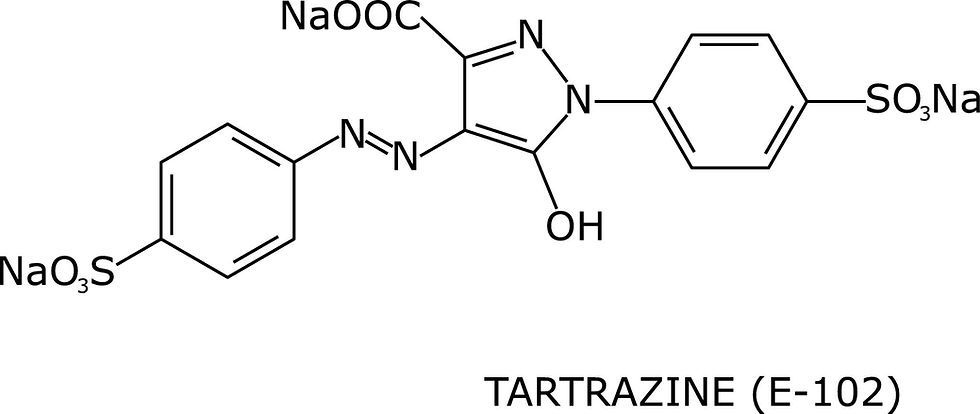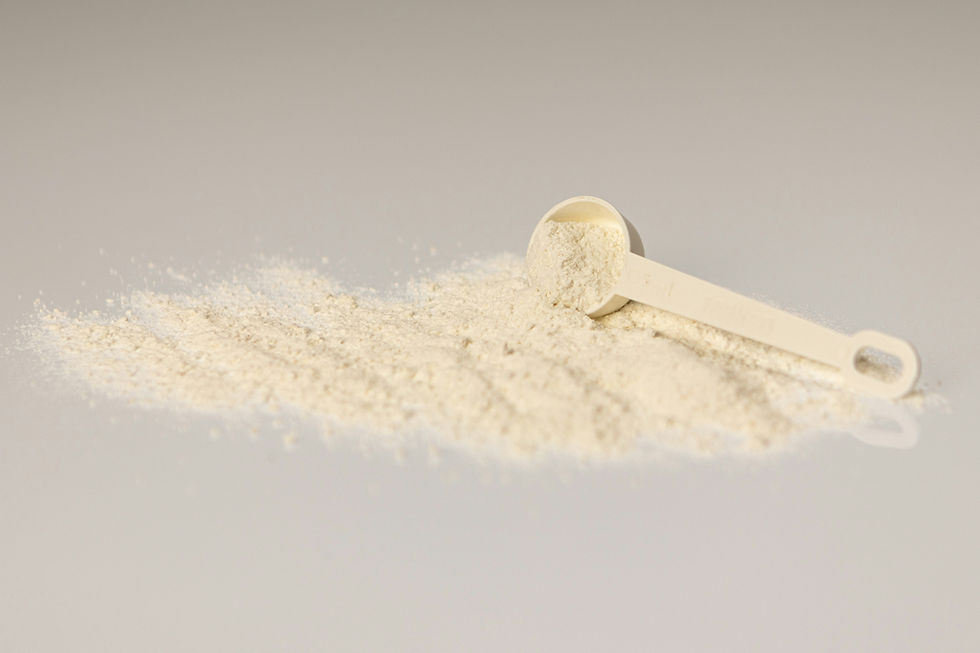Turmeric vs Yellow 5: Why One Stains While the Other Drains
- Kimberley Sun

- Aug 21
- 4 min read
Natural vs Synthetic Colours: The Ongoing Debate
The question of natural vs synthetic colours has been a point of debate for decades. In food, the answer often feels clear: natural pigments win. They come with a slew of extra benefits, sometimes even carrying antioxidants, trace minerals, and micronutrients. Turmeric in curry, beetroot in juice, spirulina in smoothies - these choices not only look good, they bring nutritional benefits beyond their colour.

In cosmetics, the playing field rules aren't so straightforward. Here, colour isn't about health, digestion, and our gut microbiomes. it's about performance. A pigment that shines in a curry might spell disaster in your bathtub - clinging to skin, towels, enamel and acrylic, long after bath-time is over. Meanwhile, a synthetic dye that has no place in your dinner might just be the best option for your self-care ritual.
When it comes to bath bombs, soaps, and skincare, the debate between natural and synthetic colourants isn't so black and white - it's a whole spectrum of grey.
While a pinch of turmeric can work wonders in food and even certain kinds of skincare ( giving a cool, sterile white hand cream a warm, sunshine tint ) - the story changes when you scale it up. Bath bombs demand far higher colour loads, especially if you're aiming for that vibrant instagram worthy bath water. And that much turmeric? It's a recipe for disaster.
Visualisaion of Tumeric Dispersion in water
Everyone knows the pain of a turmeric stain: the dreaded yellow Tupperware ring that refuses to budge no matter how much you scrub. Now imagine that clinging to your tub - your skin - your towels. What was supposed to be a wholesome, natural choice, quickly becomes a messy reminder that turmeric just doesn't play nice at high doses.
Yellow 5: A Colourant Caught Between Fact and Fear
That's where Yellow 5 steps in. Unlike turmeric, it's been designed to be water soluble. Instead of clumping or sticking, it dissolves fully and disperses evenly through your bath. The result? Bright, vibrant colour with no unwelcome stains left behind.
Visualisaion of Yellow 5 Dispersion in water
Of course, not everyone warms up to the idea of something called 'Yellow 5'. The name itself certainly doesn't do it any favours - it feels cold, clinical, and maybe even a little suspicious. 'Yellow 5' sounds like a laboratory code. That hesitation is real, and it's why many people instinctively lean toward natural colourants.
Names however, can be misleading. Yellow 5 is tightly regulated. It was first synthesized in 1884, about 141 years ago and entered wider commercial usage in the early 1900s - roughly 120 years ago. 60 years ago It was formally regulated and listed by the FDA, and in that time abundant studies have been conducted on its safety. In cosmetics, it's less about whether a pigment comes from a spice jar or a chemistry bench, and more about how it behaves in the product.
Both Yellow, But Worlds Apart: Why Turmeric Stains and Yellow 5 Doesn’t
So why does turmeric leave behind those dreaded yellow stains, while Yellow 5 rinses away without a trace? It all comes down to how the molecules are built and how they interact with water and surfaces.
Turmeric’s colour comes from curcumin, a complex polyphenol that doesn't mix well with water. Part of the molecule is hydrophobic ( 'Hydro' - from Greek meaning water, and 'Phobic' from Greek meaning fear. ) so the issue quickly becomes quite self explanatory. It can't disperse well in water ( which is very unfortunate for curcumin, since baths are generally filled with water ).


But wait, there's more! Remember when I said 'part' of the molecule is hydrophobic? Well, guess what the other parts are like? They can form bonds with proteins ( like keratin found on skin and animal derived fabrics like wool, silk etc. ), cellulose ( think plant fibres like cotton, linen, hemp, etc ), and to top it off, it gets stuck in ( microscopic ) porous surfaces like the surface of your bathtub.
This combination makes the colour incredibly sticky. Once curcumin latches onto skin, tubs, or towels, it doesn't want to let go, which is why a heavily pigmented turmeric bath bomb can quickly become a permanent reminder of their molecular structure.
Dye attraction to fibrous medium comparing yellow 5 (left) to turmeric powder (right) without wringing out.
Yellow 5, on the other hand, was designed to do the opposite. As a synthetic azo dye, it carries sulfonate groups that make it incredibly water-soluble and negatively charged. To put it simply, instead of sticking to everything it can get its hands on, yellow 5 prefers to stay dissolved and suspended in water, dispersing evenly without clinging onto surfaces.
One compound is a natural stain-maker, the other is a lab-made colour built not to leave a mark.
Turmeric vs Yellow 5: Using The Right Colour in the Right Place
Turmeric absolutely has its place. In food, it's a superstar - adding colour, flavour, and even trace nutritional benefits that synthetic colours could never hope to match. When it comes to cosmetics, however, especially something like bath bombs where colour loads are high, turmeric simply isn't built for the job.
Yellow 5 (left), Turmeric (right), before and after emptying beaker.
What's disappointing is how quickly the conversation turns into 'natural good, synthetic bad'. Not all colourants are suitable in all scenarios, and just because something comes from a spice jar doesn't mean it's the best fit for your tub. Synthetic dyes like Yellow 5 were specifically designed to stay on the surface, rinse away easily, and most importantly - not penetrate the skin. That's not a flaw, that's a carefully constructed feature.
It's unfortunate that the food industry's move toward natural colourants ( a very positive change in that context ) has spilled over and painted synthetic dyes as the villain in unrelated industries. In cosmetics, the story is different. Performance, safety, and the end user’s experience matter most.
Hopefully, more people can warm up to the idea that sometimes a lab-made colourant isn't the enemy - it's simply the right tool for the job.
References:































Comments